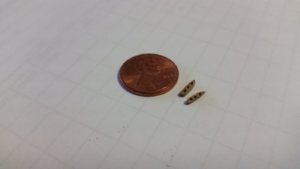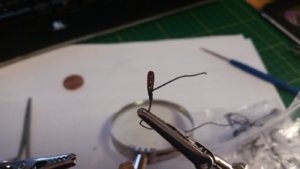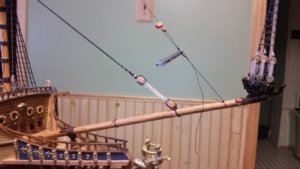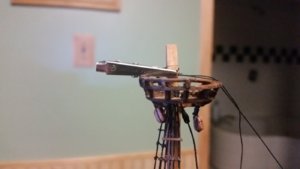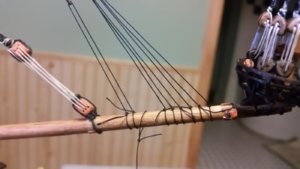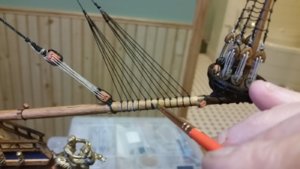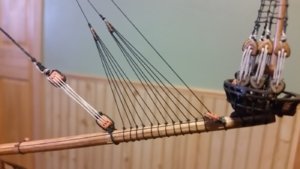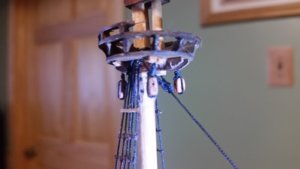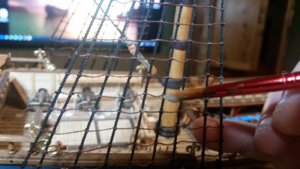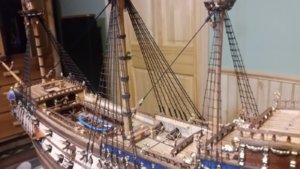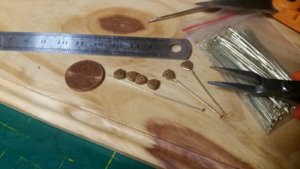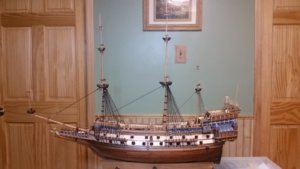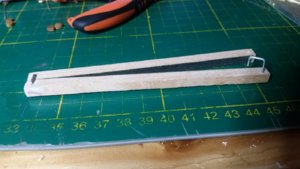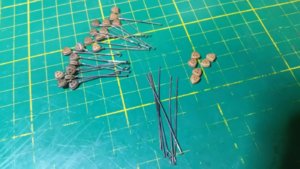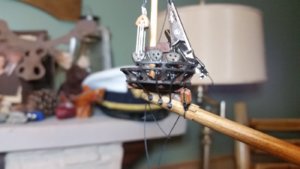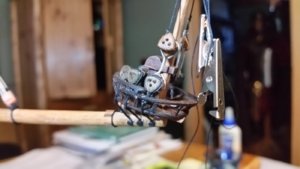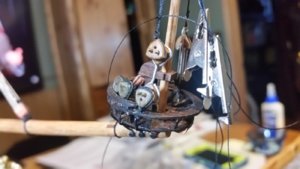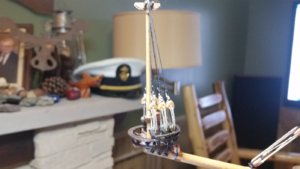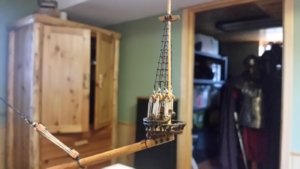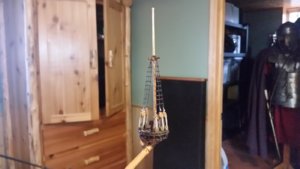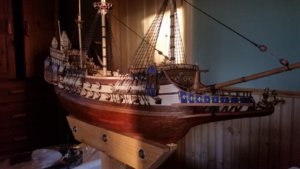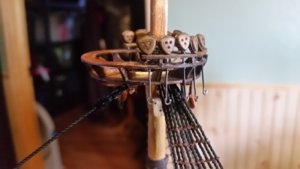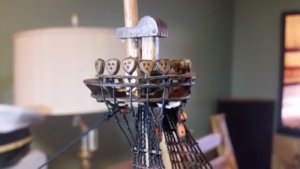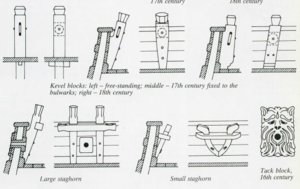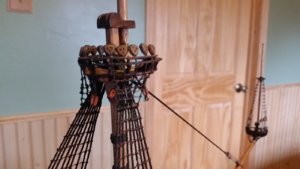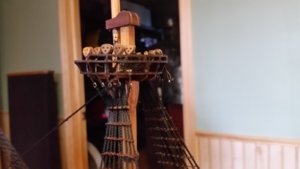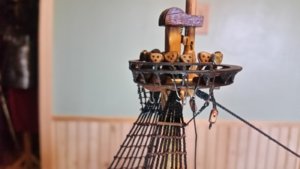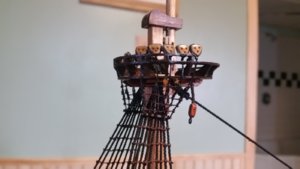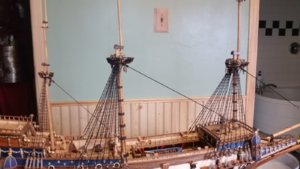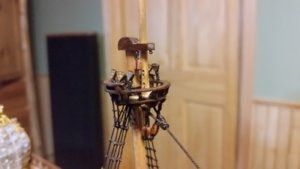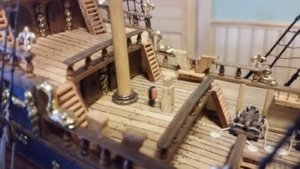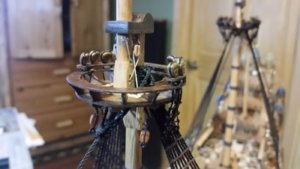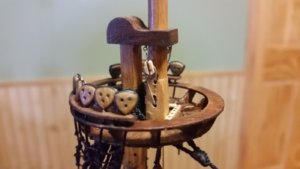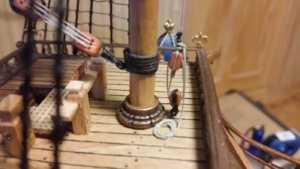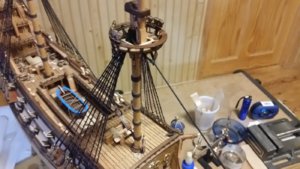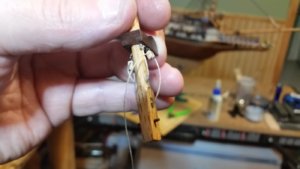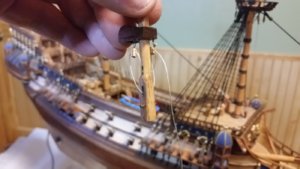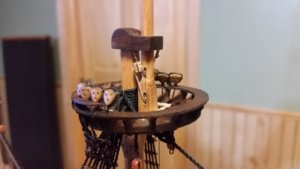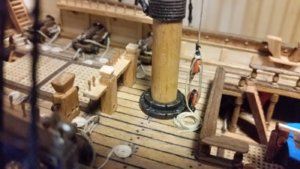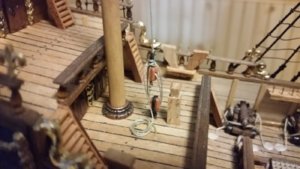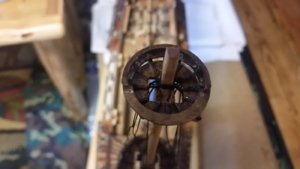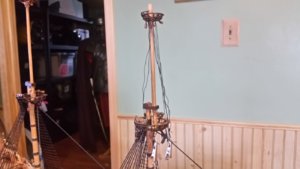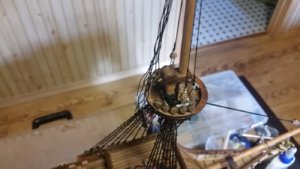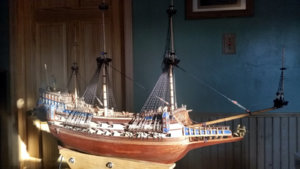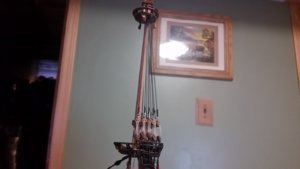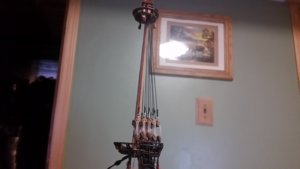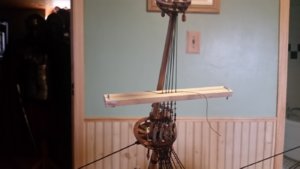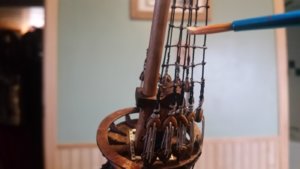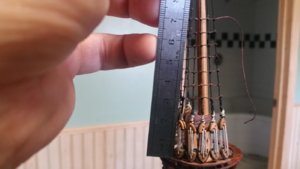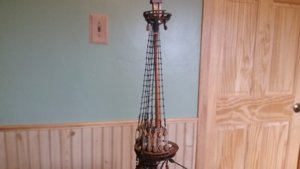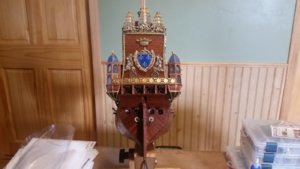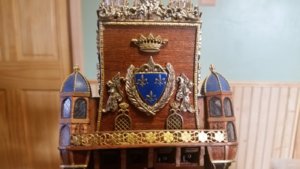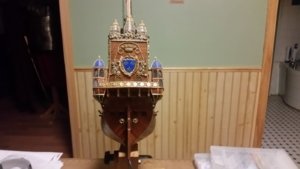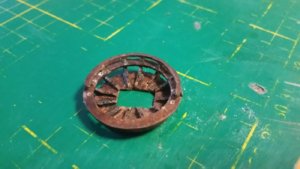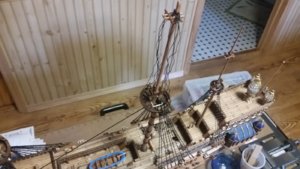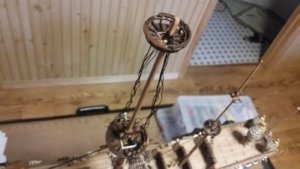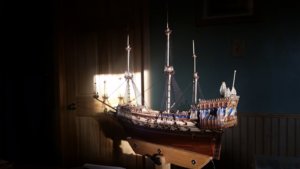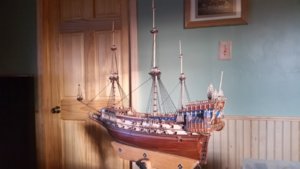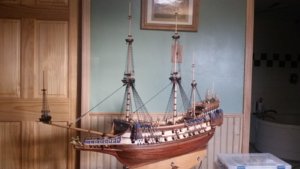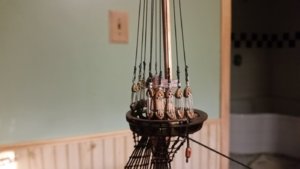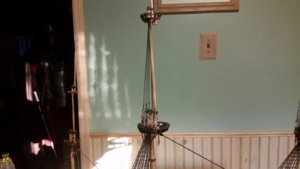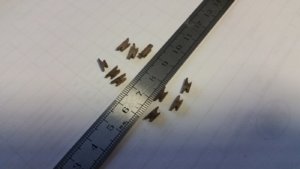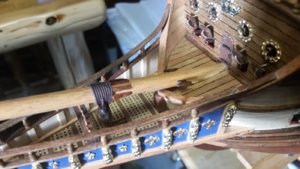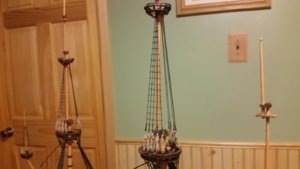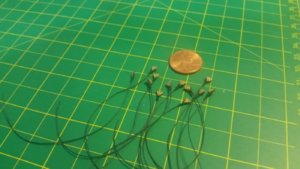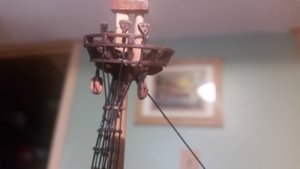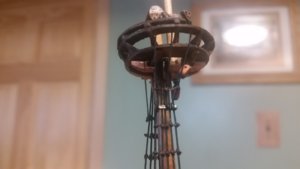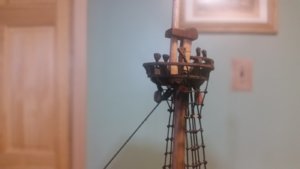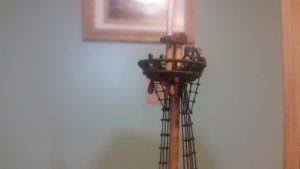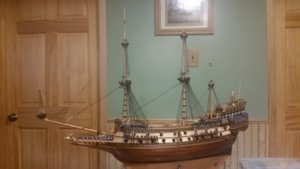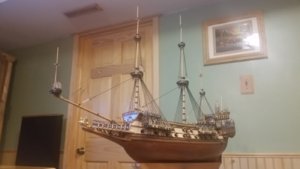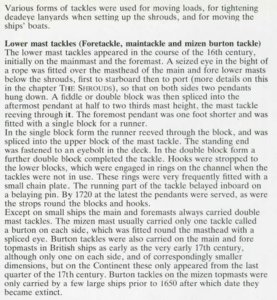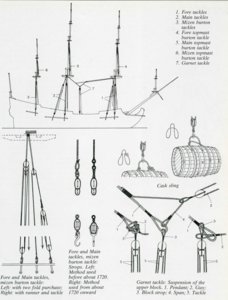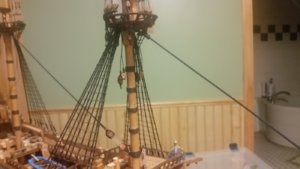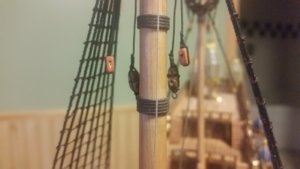Today the ratlines were completed on the starboard side for the main topmast.
Then, preparations for the fore topmast stay rigging were started by making two euphroes used in the crow's feet for that stay line. A Dremel tool was used to drill a series of holes in a stick of walnut wood, then the outer profile of each euphroe was cut and shaped. To make the line bend properly as if it were bent about a sheave, the edges of the each hole were carved out using the tiny drill bit at a sharply acute angle to the hole. The blocks had their sheave holes properly shaped similarly to the line arcs more sharply in each block.
A 0.5mm stay line was prepared. A loop was and a mouse were fashioned, but the 7mm block that goes on the opposite was not attached. That comes later.
The crow's foot was rigged as follows. The euphroes were lashed to each end of a segment of line, which also passed through a 5mm block. A long length of 0.30mm line was attached to the block, and the other end of it was clamped temporarily to the top of the fore topmast. The length of this line was adjust to place the block and two euphroes at the proper distance from the bowsprit. To make sure that the lines are all equally taut in a Dutch style crow's foot stay, you start work at the bowsprit and work toward the large 7mm block at the end of the stay line. Several short segments of 0.30mm black line were cut for the lines that pass through the euphroes. You start with the line centermost relative to each euphroe, which is the line that passes through the last hole in the euphroe at its bottom end. For each line, you tie the forward end to the bowsprit with a slip knot so it stays tight on the bowsprit. Add a tad of glue to this knot. Then you pass it through the euphroe rearward and secure it to the bowsprit with an overhand bend followed by a half hitch. When the forward most euphroe line is secure by one line, run a similar line through the end of the second euphroe at the rear. Adjust the length of this line so that both euphroes are equidistant from the 5mm block above. The lanyard off the 5mm block must have enough tension to allow you to see the angles of the lines and the placement of the euphroes.
Now rig the lines for through the next hole up in each euphroe. Take care to tension each euphroe line so that the previous line does not go slack from over-tightening the next line. all three lines in each euphroe must have equal tension. This is critical if the end result is to look good. It takes several tiny adjustments making the second knot in each euphroe line and the position of the loops around the bowsprit to get everything even, so don't cinch the knots tight or apply glue until you are sure the tension is right.
When the euphroe lines are done, unclamp the 0.3mm line from the mast, and pass it through the center of a 7mm single block. You can now choose the position of the 7mm block, and lash the end of the 0.5mm stay line to the block. The take the end of the 0.30mm line and pass it through the 5mm block that was lashed to the bowsprit just behind the spritsail topmast top. run the line rearward along the bowsprit and tie it to the cleat on the side of the bowsprit over the bow deck.
So far, this line was the most fun to rig, and it looks great. I was really getting tired of ratlines!


